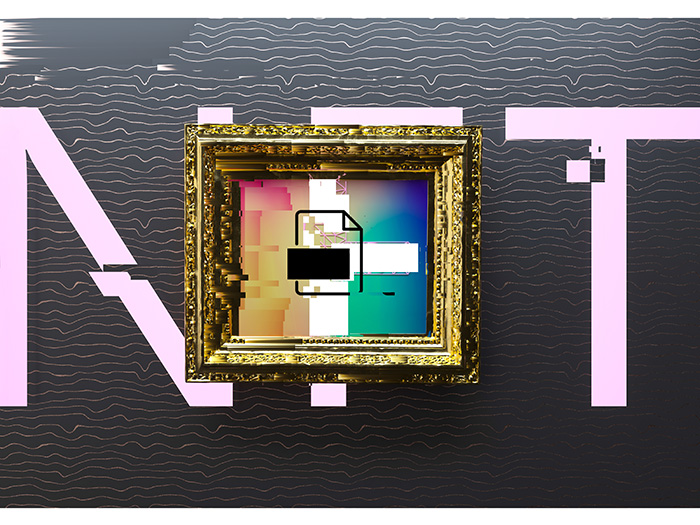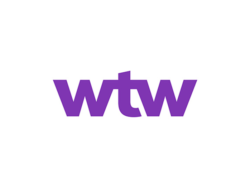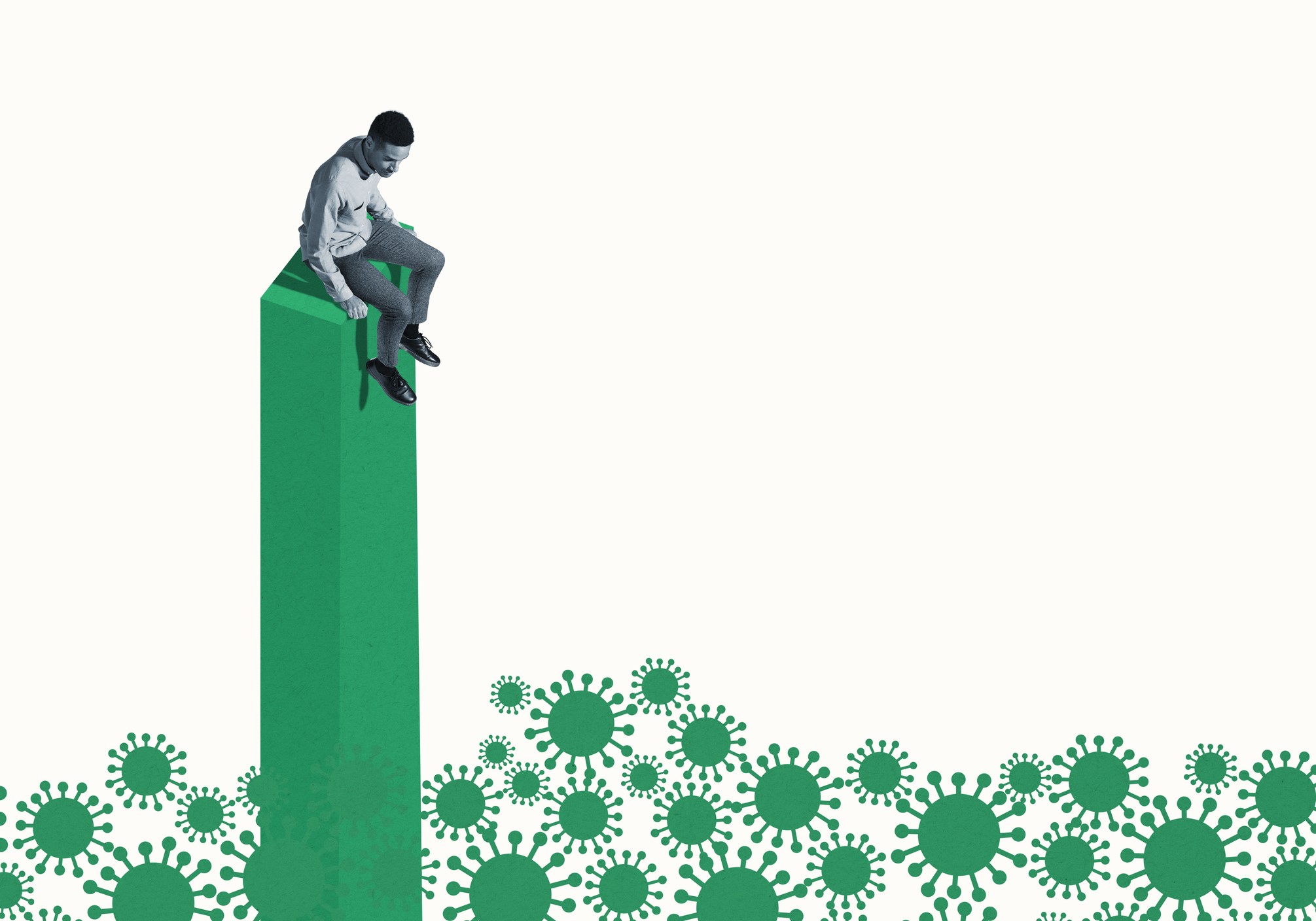NFTs Are Disrupting Fine Arts: Here’s What Risk Professionals Should Know

When Adrienne Reid heard that Mike Winkelmann, the digital artist known as Beeple, sold a piece of his work at the art auction house Christie’s for $69 million, she didn’t think much of it.
Reid, a fine arts insurance broker and vice president with Aon/Huntington T. Block Insurance Agency, had witnessed many high-dollar art sales. It seemed like it was just par for the course for the industry.
The sale, which made Beeple among the top three most valuable living artists, wasn’t for any old digital piece. It was for an NFT, an electronic record of ownership for a digital item.
“When I first heard about NFTs, I thought it was just another word for digital artwork,” she said. “I had no idea how wrong I was on that.”
Reid was intrigued. She knew this technology had the potential to change how people buy and trade digital artworks. Given that the technology exists entirely within the digital realm, it would also bring new risks to the sector.
Her journey to understanding NFTs took her through YouTube lectures from NFT traders to conversations with industry experts, eventually buying and minting her own NFTs.
But like many, she started with one question: What exactly is an NFT?
What the Heck Is an NFT?

Adrienne Reid, vice president,
Aon/Huntington T. Block
NFTs, or non-fungible tokens, are a record, stored on a blockchain, that allow for ownership of a digital asset. With an NFT, a digital image is assigned a unique string of numbers, allowing for collectors to distinguish between the “original” and any copies.
Most NFTs are hosted on the Ethereum blockchain, but others have already implemented their own systems for storing these assets.
Like cryptocurrencies and other digital assets stored on blockchain, people keep their NFTs in e-wallets accessed using keys — a unique string of alphanumeric digits.
It’s important to note that an NFT is just a record of ownership for the digital object — not the object itself.
“Users that are holding the NFTs, or that are trading the NFTs, know exactly where these items are from and know exactly how many of them are there in the world [and] on the blockchain,” said Hsuan Lee, CEO of Portto, a company that provides tools like digital wallets and keys to blockchain users.
“They’re utilizing the blockchain’s immutability and traceability.”
Though NFTs have existed since 2014, they first gained popularity in 2017 with CryptoKitties. CryptoKitties is a blockchain game created by the Canadian company Dapper Labs that allows people to breed and trade digital cats. Per reporting from Wired, CryptoKitties was so popular, transactions related to the game slowed the Ethereum blockchain where it was hosted.
Now, NFT sales are booming. Last year, the volume of NFTs totaled $24.9 billion, Reuters reported, up from $94.9 million in 2020.
They can be used to allow people to own profile pictures, trade assets within video games or to buy and sell digital creations ranging from memes and tweets to videos and artwork. This year, NFTs may remain popular as investors shift funds into alternative assets as some speculate high inflation in the U.S. may lead to a recession.
“Alternative assets are going to be very, very, very big this year, especially with the talks of inflation,” said Alex Lemberg, CEO of the Nimbus Platform, a blockchain-based company that specializes in Decentralized Finance solutions.
“With physical or digital alternative assets, you may buy into an asset with the U.S. dollar, but once you buy that physical asset, whatever happens with the dollar doesn’t truly affect you as much … [because] two, three years from now, you can always sell that physical object into another currency.”
Celebrities, including Grimes and Twitter CEO Jack Dorsey, have made millions creating and selling NFTs. They’ve become such a fixture of pop culture that in March 2021 SNL made a video parodying these new assets called “What the Hell is an NFT?”
What Does This Have to Do with Fine Art?
In the fine art sector, NFTs are being used to determine ownership of original digital artworks in a world where digital images can be copied simply by taking a screenshot or downloading a file.
To put it in a more familiar context, anyone can buy a print of the Mona Lisa; only one person can own the real thing. NFT owners are purchasing proof that they own the real thing.
“Before NFTs, people have been creating digital art — it could be video, it could be [an] image — but the problem is that it’s so easily copy-able. So my copy of this image and your copy of this image look exactly the same. There’s no way to prove I’m owning the original copy,” Lee said.
“With the NFT, you can actually prove it — that you actually own the original piece.”
Though the technology is still nascent, some artists and collectors are embracing it. The Seattle NFT Museum in Washington and the Art Blocks gallery in Marfa, Texas are some of the first to put solely NFTs on display.
Digital artists appreciate that the technology enables them to verify their works’ authenticity when they put them up for sale. Platforms are simple and easy to use, enabling artists to “mint” NFTs and just wait for offers to come in. NFTs can be programmed to pay artists a fee every time the work is resold, giving creators access to receive royalties — a rarity in the fine arts space.
“The biggest thing about NFTs that’s really exciting for artists is that they can receive a royalty stream,” Reid said. “That’s something that historically has always been a challenge for artists; they don’t get any compensation from the future uptick in the value of their art when it’s resold.”
And they’re enabling more people to participate in collecting and trading art. Though prices of NFTs seem high — in April 2021 estimates for the average cost ranged from $2,400 to $3,500 — these numbers are skewed by multi-million dollar sales, Art Net reports. Fifty percent of sales are less than $200.
“That allows somebody who doesn’t have a significant amount of wealth to actually build an art collection that they can enjoy and share with friends, no matter where they are in the world,” Reid said.
Risky or Revolutionary?
One of the most obvious risks that those who buy and sell NFTs face is cyber threats. Hackers could try to seize an NFT owner’s key and hold their assets for a ransom or delete them entirely.
“It’s a very real concern that your wallet could be hacked and your NFTs could be stolen,” Reid said. “So that’s definitely an exposure.”
Beyond cyber attacks, collectors need to understand an NFT is merely a record of ownership, like the deed to a house. It isn’t the physical asset, which is often stored at a separate URL. If a collector doesn’t own the website where the work whose NFT they purchased is stored, the site owner could delete their asset.
“If you don’t have a reliable backup of the digital asset or complete confidence in the hosting site itself, you could have an NFT that points to nothing or a 404,” Reid said.
If you’re seeking to insure NFTs as part of an art collection, Reid said that underwriters will likely want to know where the real asset is being stored and whether or not you have any backups in case the original file is lost.
Better yet, you can host the original file yourself on your own server. That way, you won’t be relying on a third party to keep your asset secure.
It would be prudent for collectors and creators to consider the ecological costs of creating, storing and trading NFTs.
The blockchain technology where NFT sales are recorded are responsible for tons of carbon emissions. French artist Joanie Lemercier’s first sale of six NFTs consumed 8.7 megawatt-hours of energy — the same amount used by his entire studio over a two year period, Wired reports.
“They take up a ton of energy,” Reid said. “The art community overall is very environmentally conscious, and so that has been problematic.”
When a Broker Buys an NFT
The risks that come with owning an NFT are something Reid understands firsthand. Last year, she purchased one of 10,000 NFTs released by the contemporary artist Damien Hirst as part of his project “The Currency.”
In “The Currency,” each NFT corresponds to a physical object. In this case, a unique hand-painted, dot-covered works on paper. Hirst sold each painting/NFT duo for $2,000 with the condition that after a year, buyers would have to decide whether to keep the real painting or the digital token. If they choose the token, the real paintings will be ceremoniously burned.
“I just thought that was a really fascinating premise, sort of testing the art market to see which will you keep, the tangible or the intangible?” Reid said.
So far, only 550 NFTs have been exchanged for the physical works of art thus far into the project, according to Reid.
Only two months after the project launched in July, sales generated by “The Currency” reached $25 million, and there were 1,571 sales on secondary markets, Art Net reports.
Reid’s NFT reached around $70,000 in value at comparable resale peak last September, but has since dropped down to around $12,000. “I’m trying not to look at it,” she confessed.

A photo of Reid’s gingerbread NFT
“NFTs are moving up and down in value quite dramatically,” Reid said. “There’s a lot of volatility as the market adjusts to mainstream adoption. It will be exciting to see in the coming years in what ways NFTs and the blockchain technology will penetrate the art market for the long-term.”
After purchasing an NFT, Reid had to set up an e-wallet to store her token and joined a Discord server, an internet messaging and gaming platform, for other owners of Hirst NFTs. Later in the year, she minted her own NFT — a gif of a gingerbread house rotating on a pedestal.
“Being a fine arts insurance professional, I felt duty bound to really pull up the sleeves and figure it out,” Reid said.
“I have art in my house hanging on the walls. I understand my clients when they talk to me about the concerns and risks of their physical artworks; I know that, I understand that. I wanted to be able to speak to [NFTs] from a firsthand experience as well.”
When asked whether she plans to keep the NFT or the original painting, Reid demurs: “Originally, we were definitely going to take the physical painting,” she said. “But as I have learned more about NFTs over the past year and watched the market specifically with The Currency NFTs, now I am not so sure.” &
 Courtney DuChene was recognized as the winner in the “Insurance & Risk Technology Journalist of the Year” category for the Willis Towers Watson 2023 Journalist of the Year award. Her reporting in the above article contributed to her win.
Courtney DuChene was recognized as the winner in the “Insurance & Risk Technology Journalist of the Year” category for the Willis Towers Watson 2023 Journalist of the Year award. Her reporting in the above article contributed to her win.










